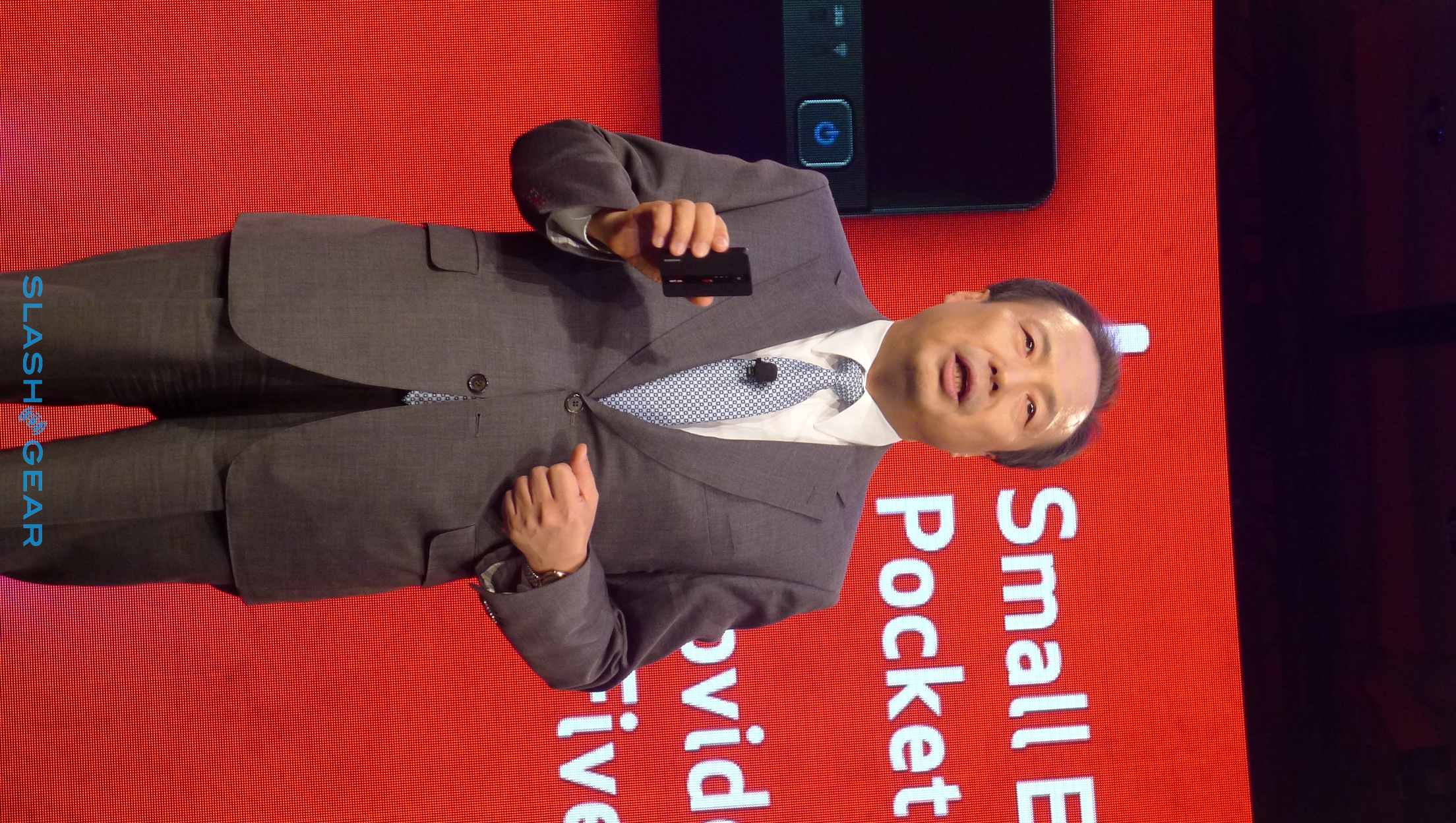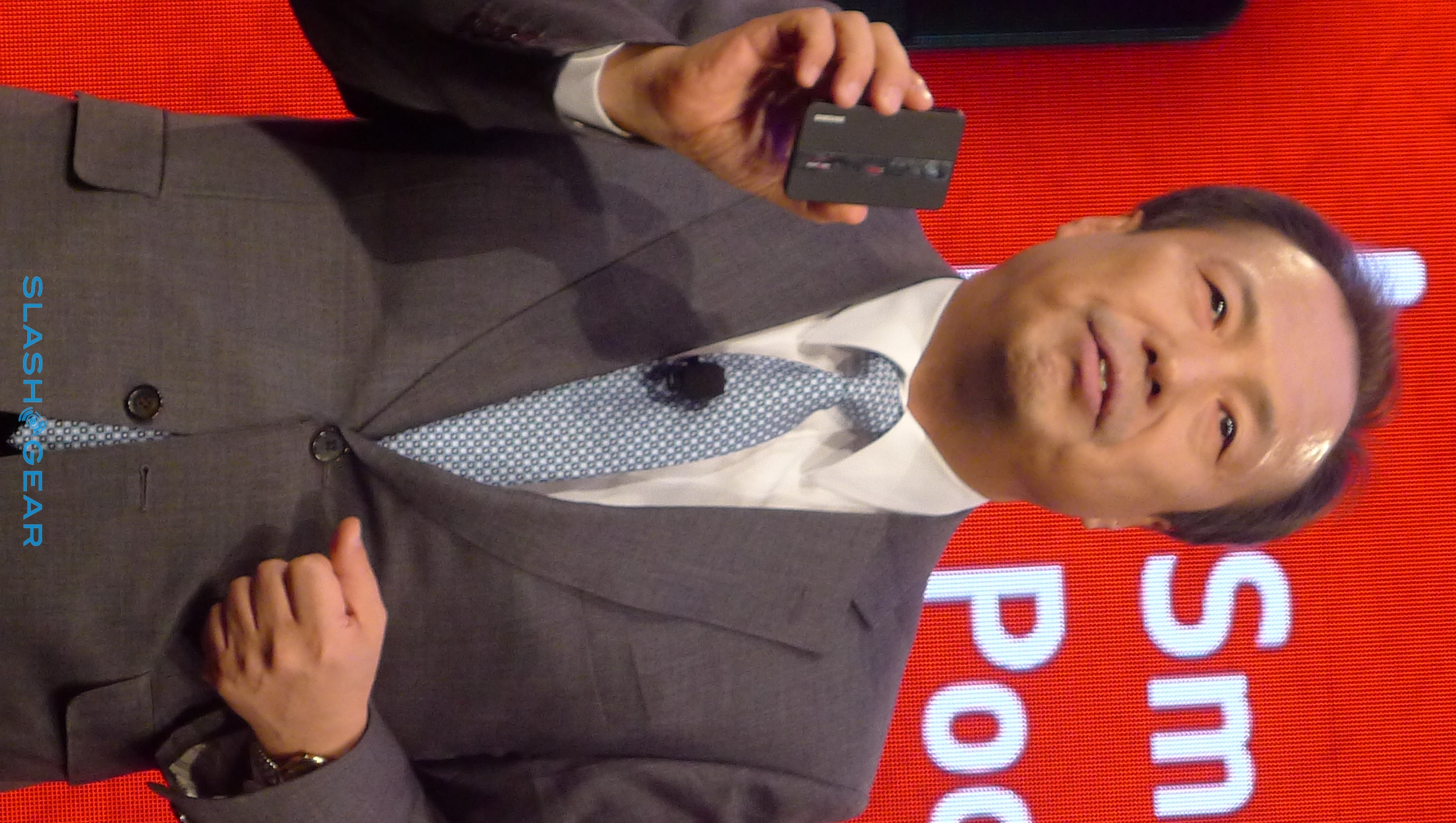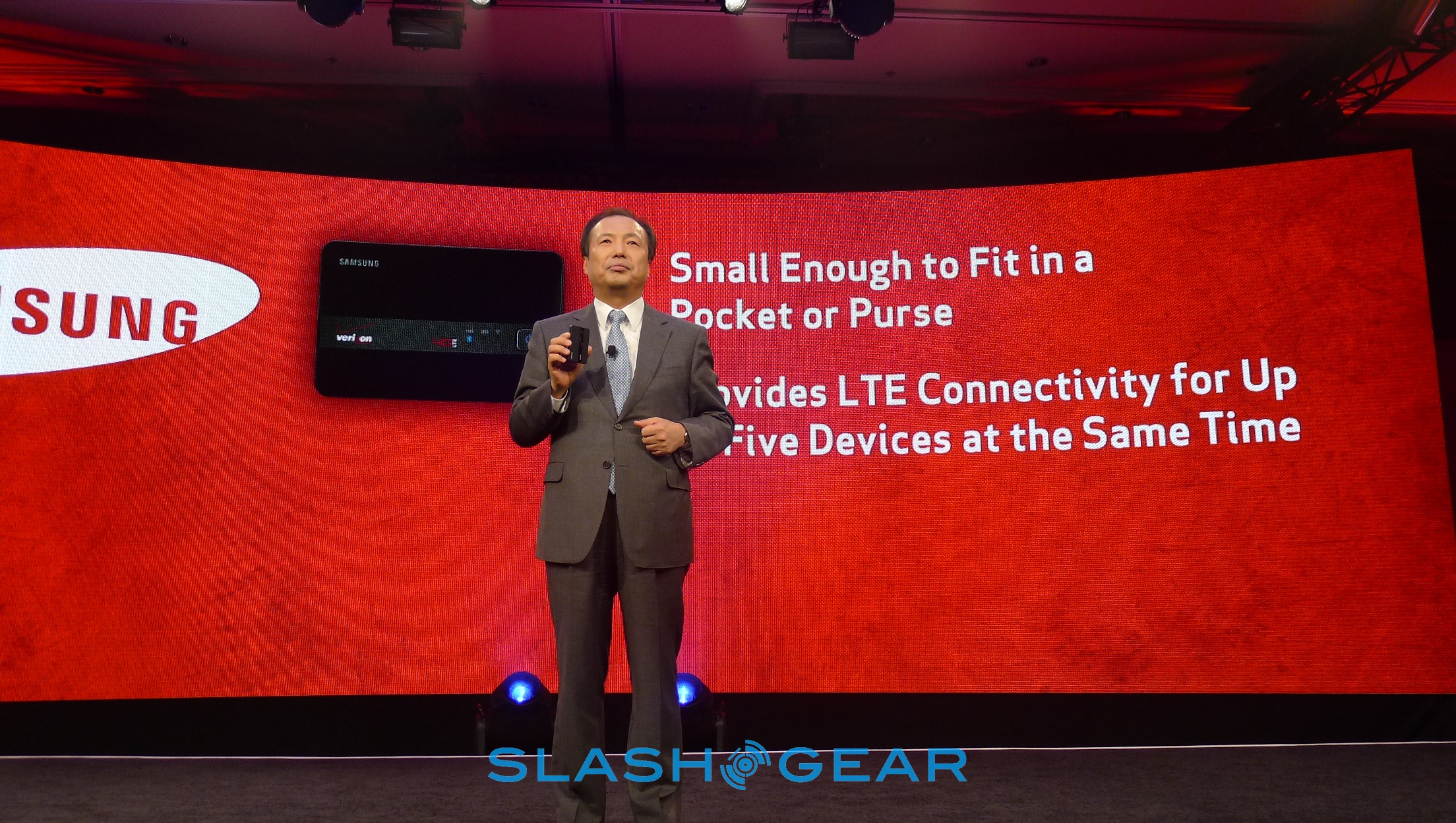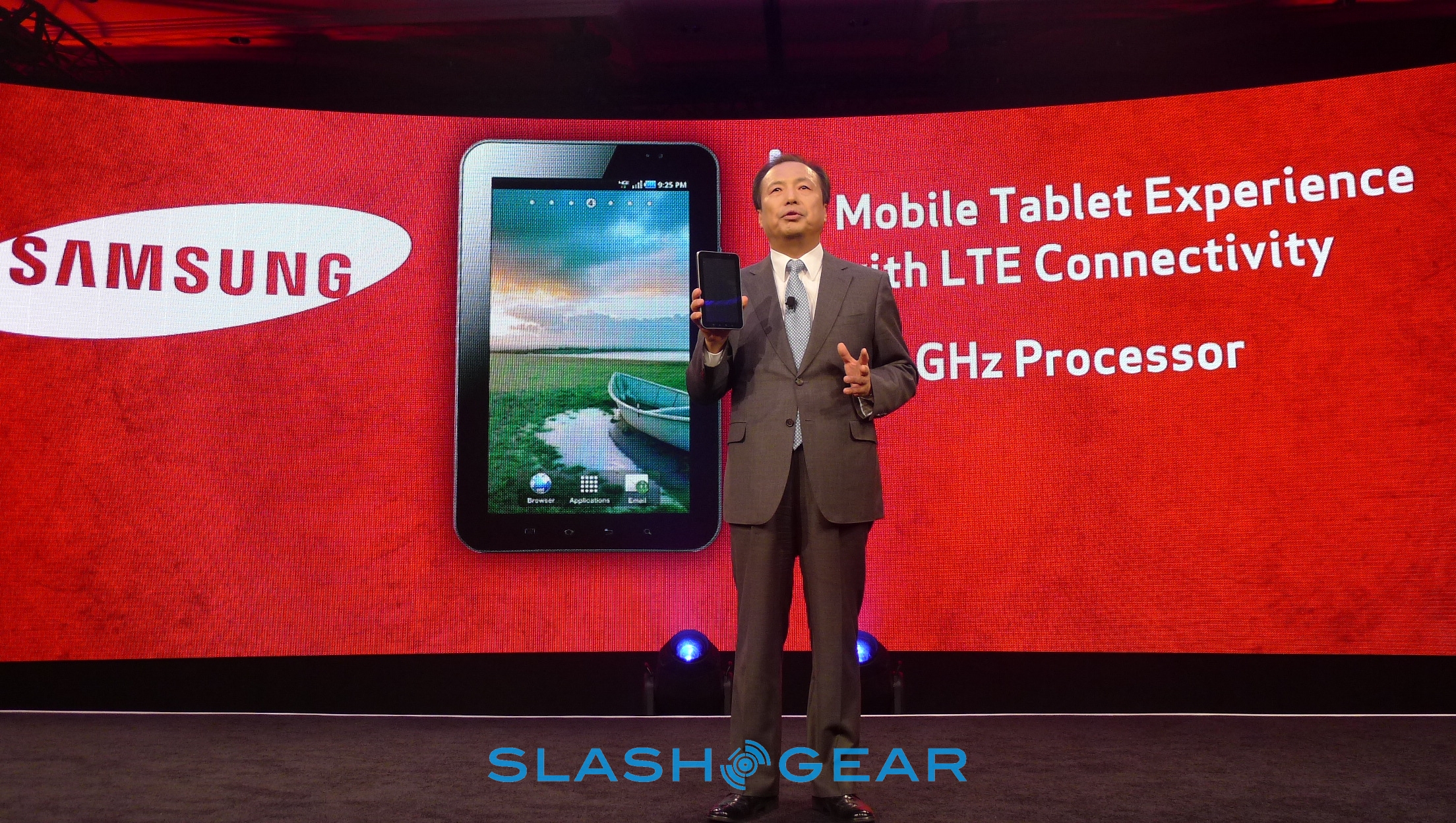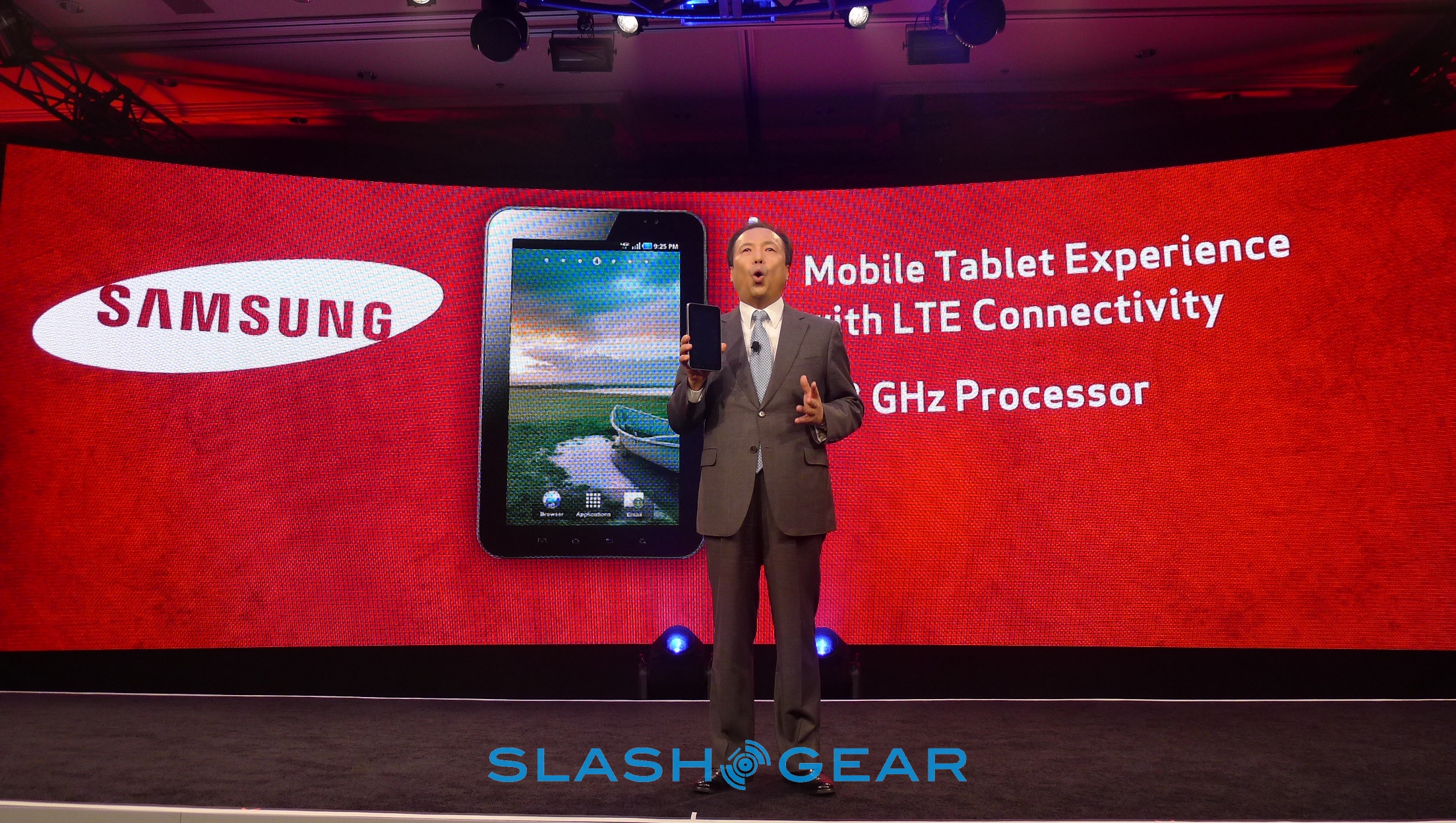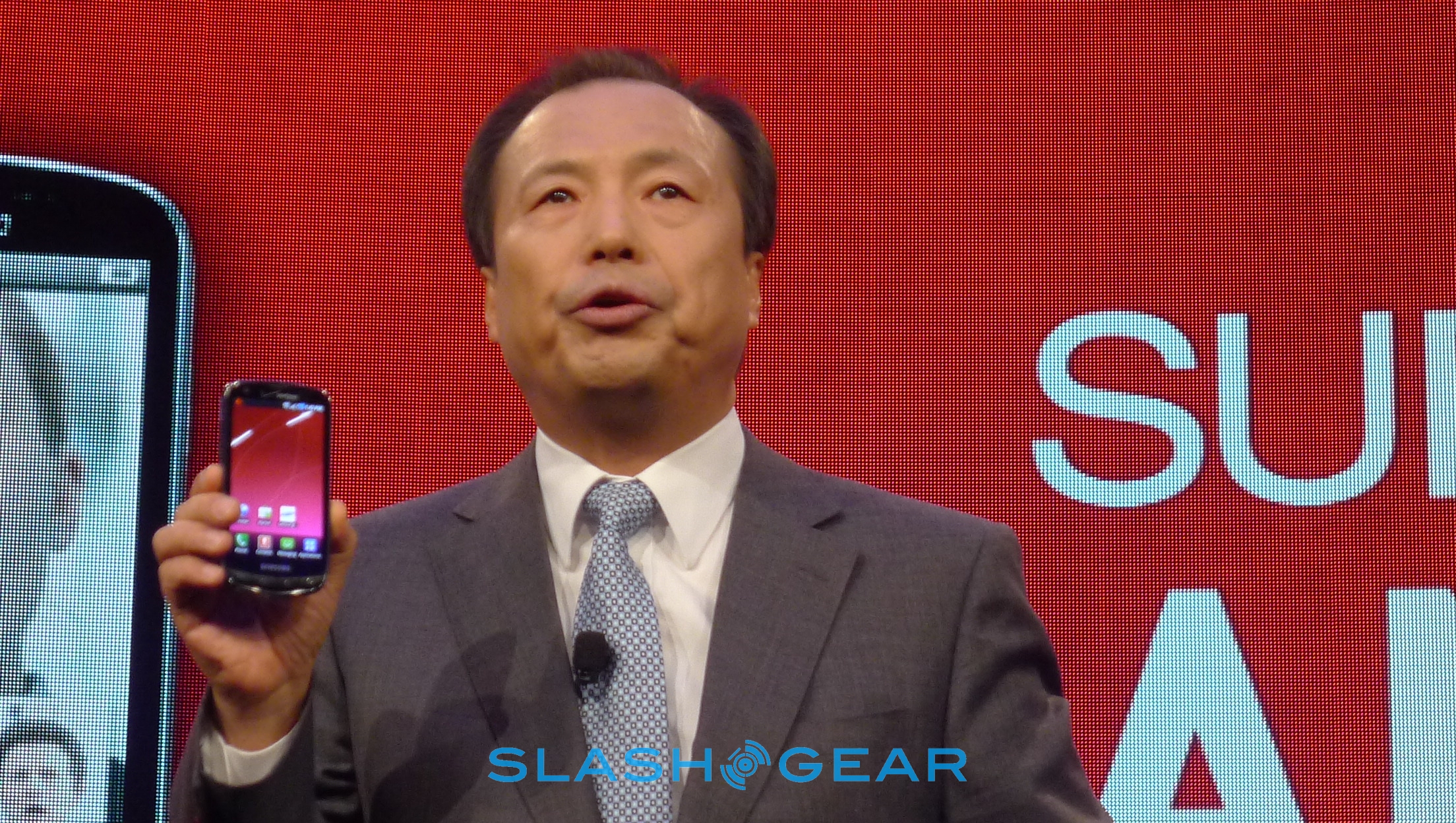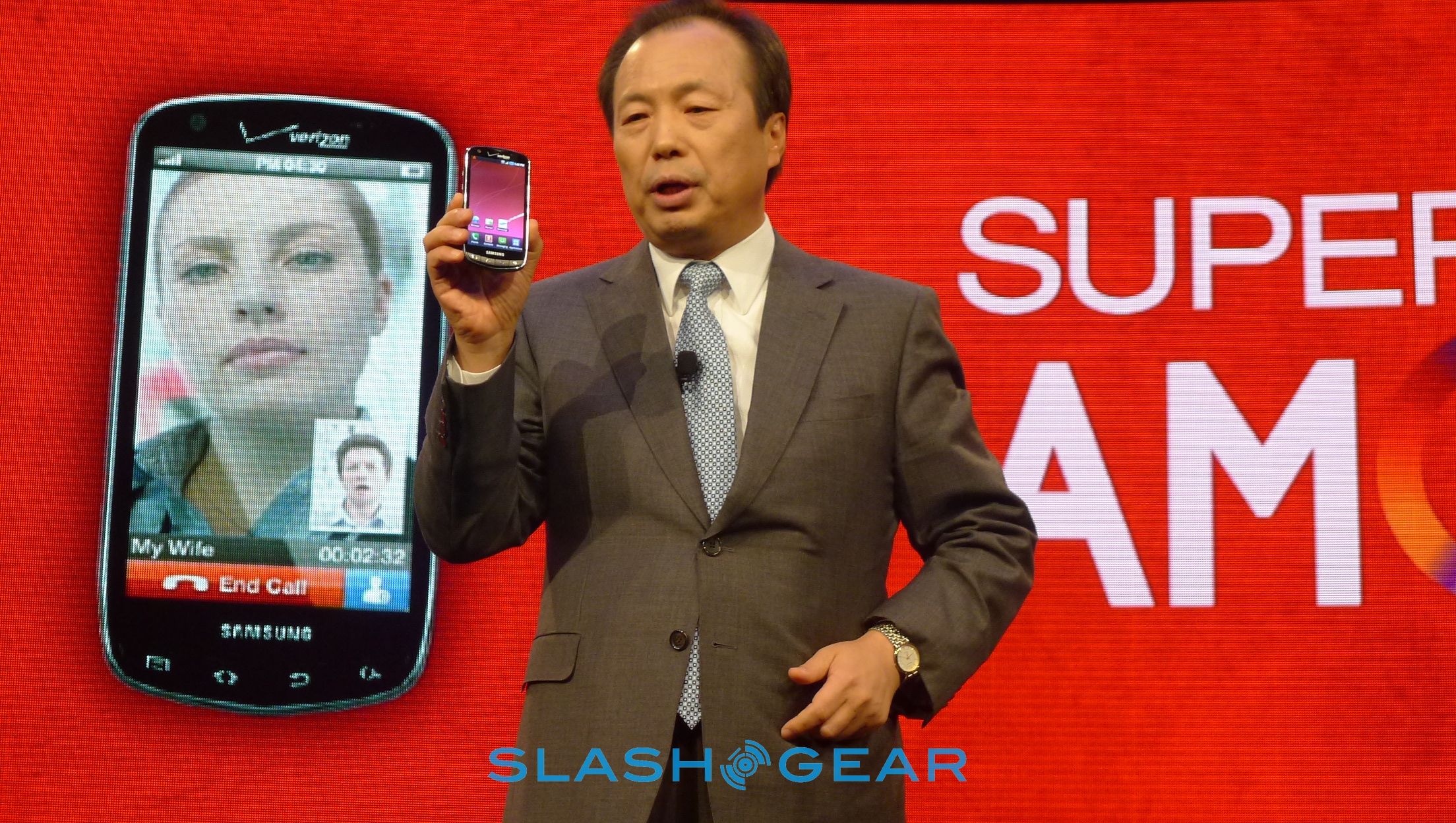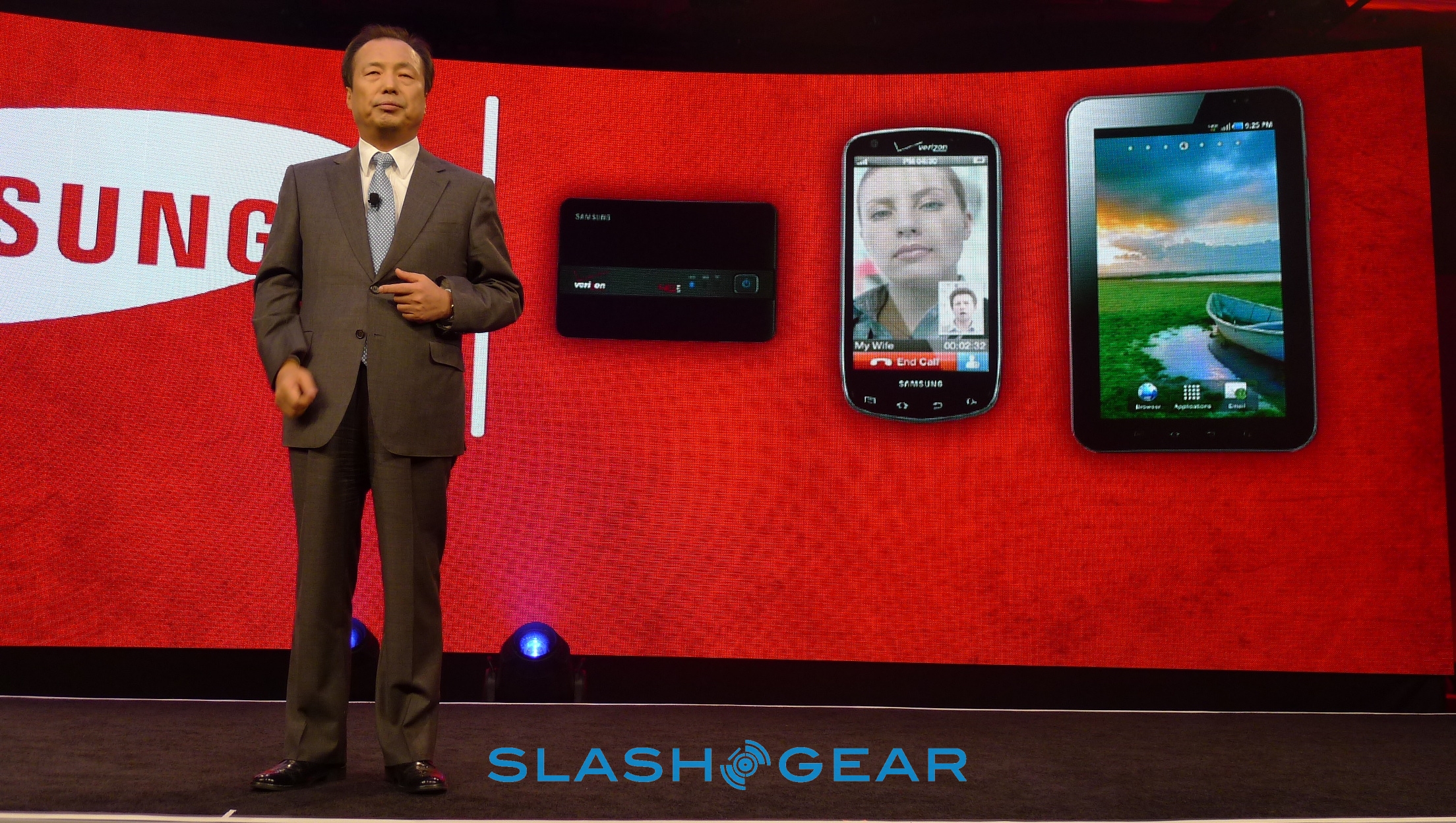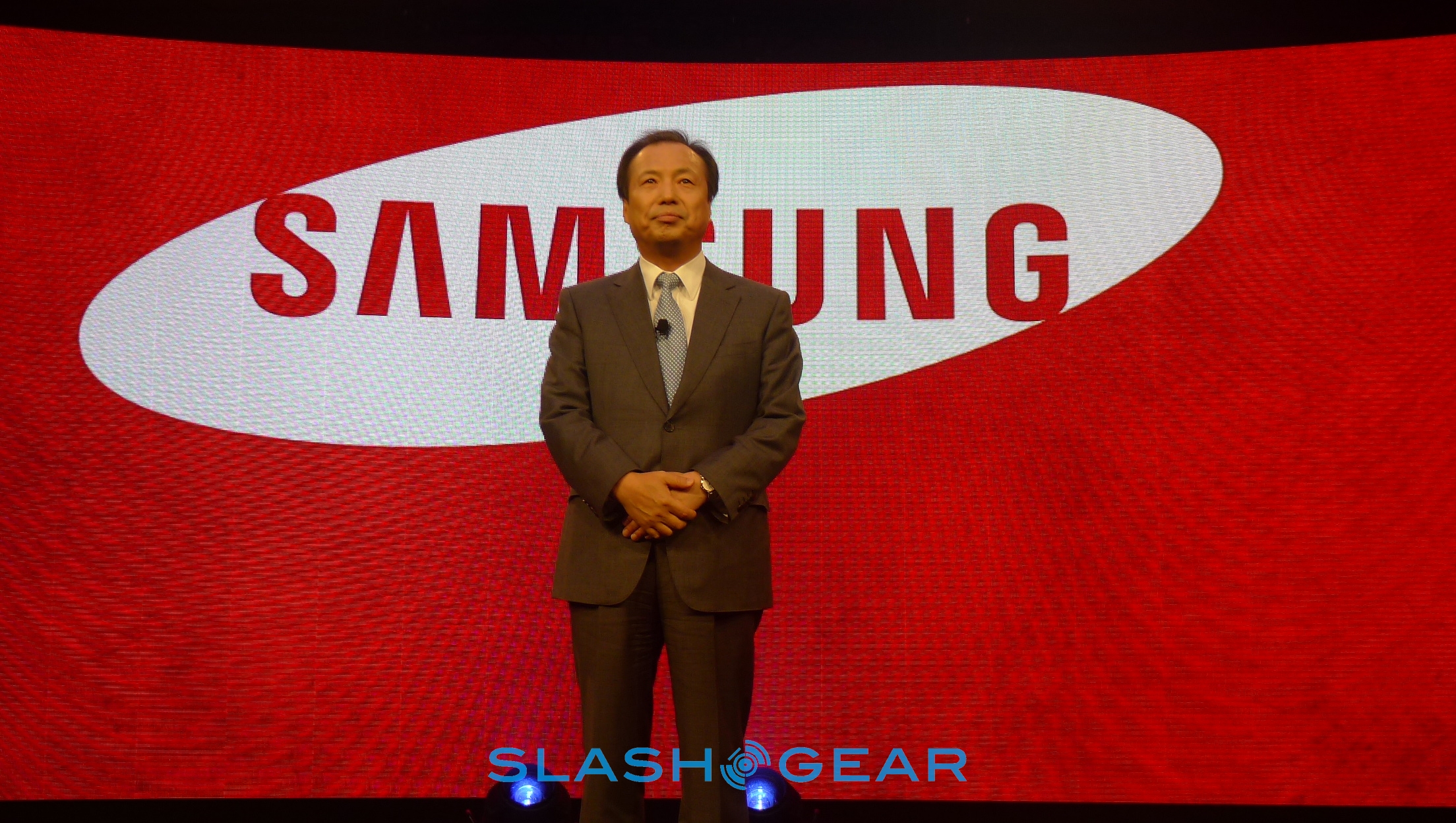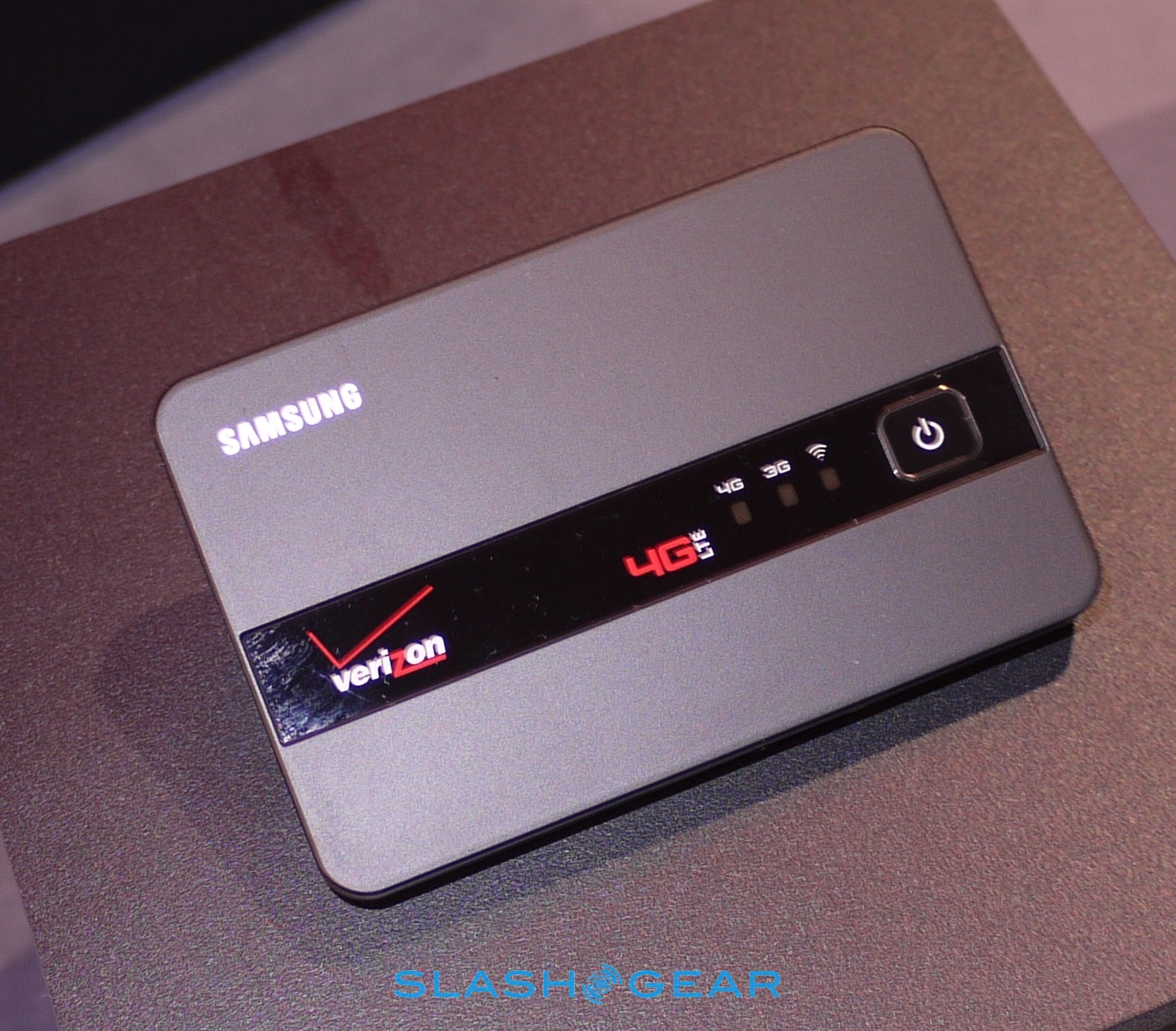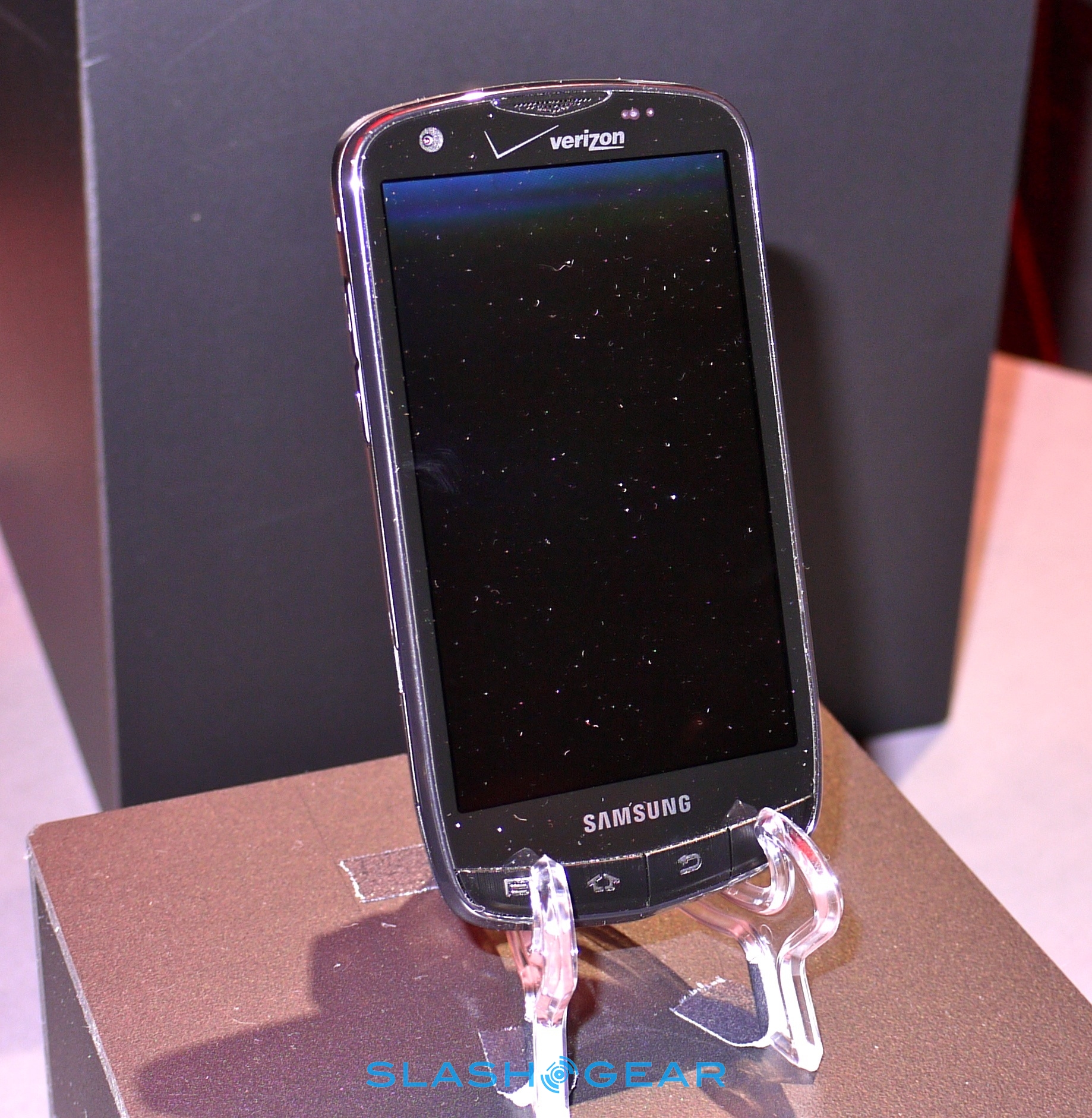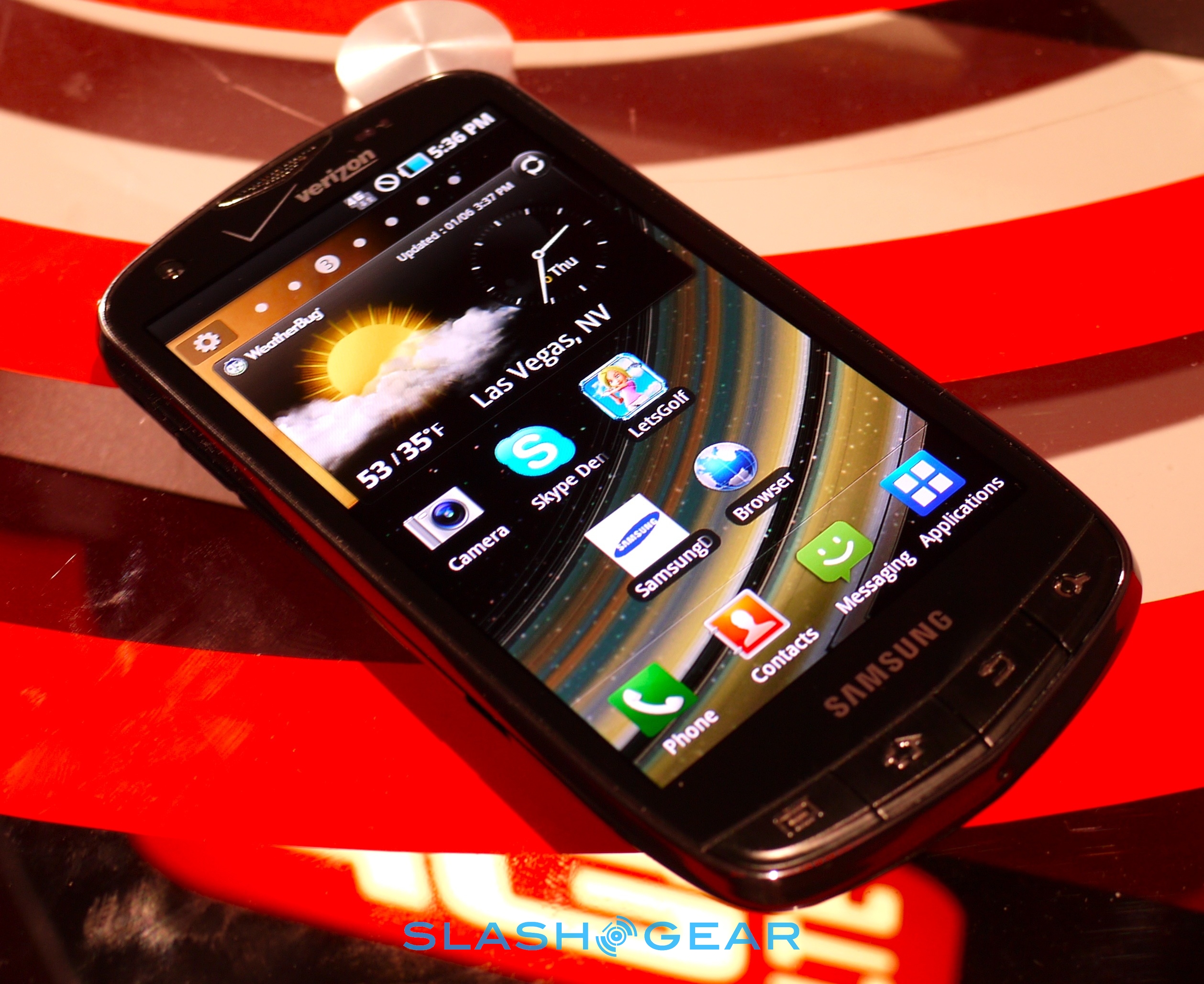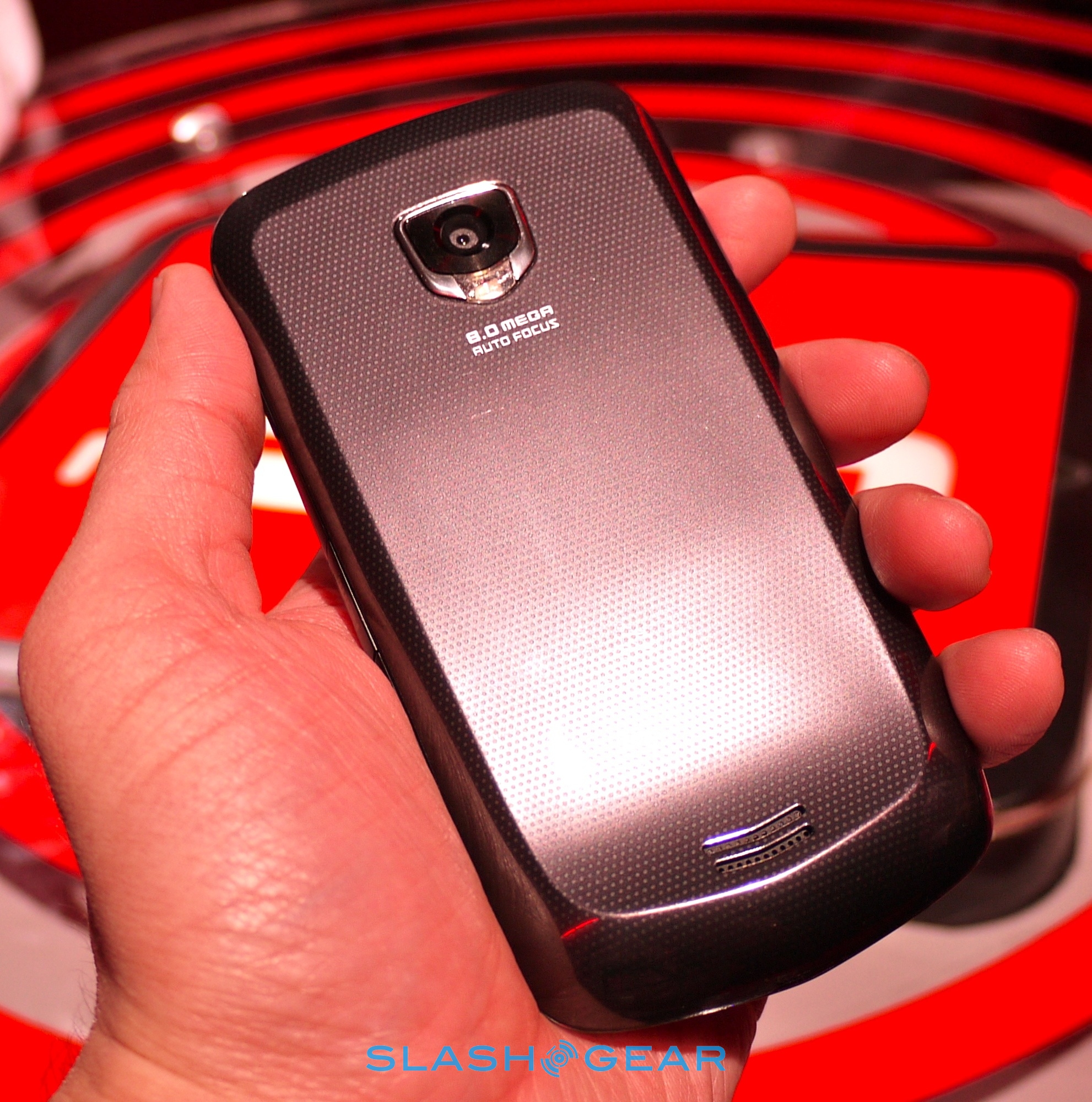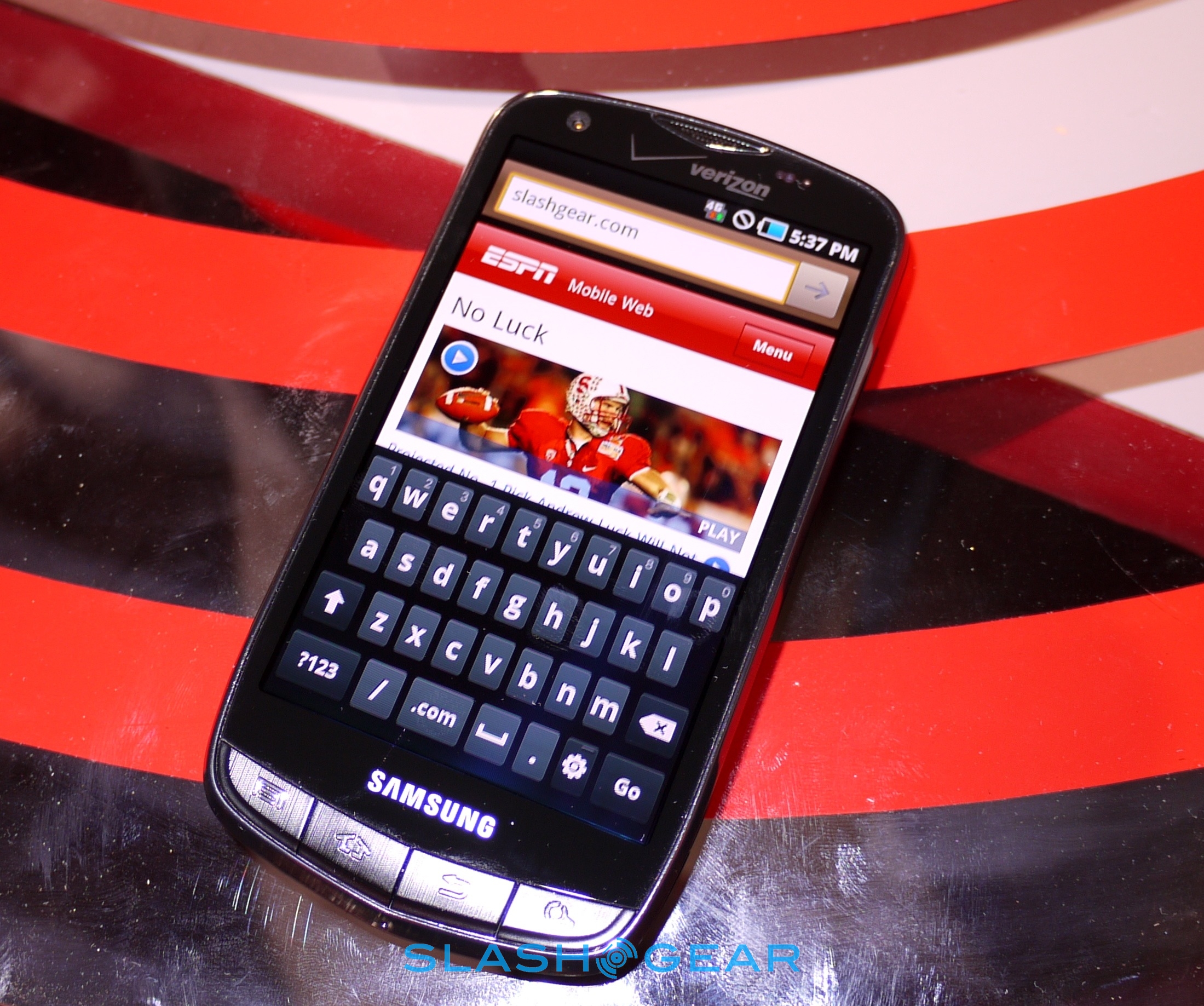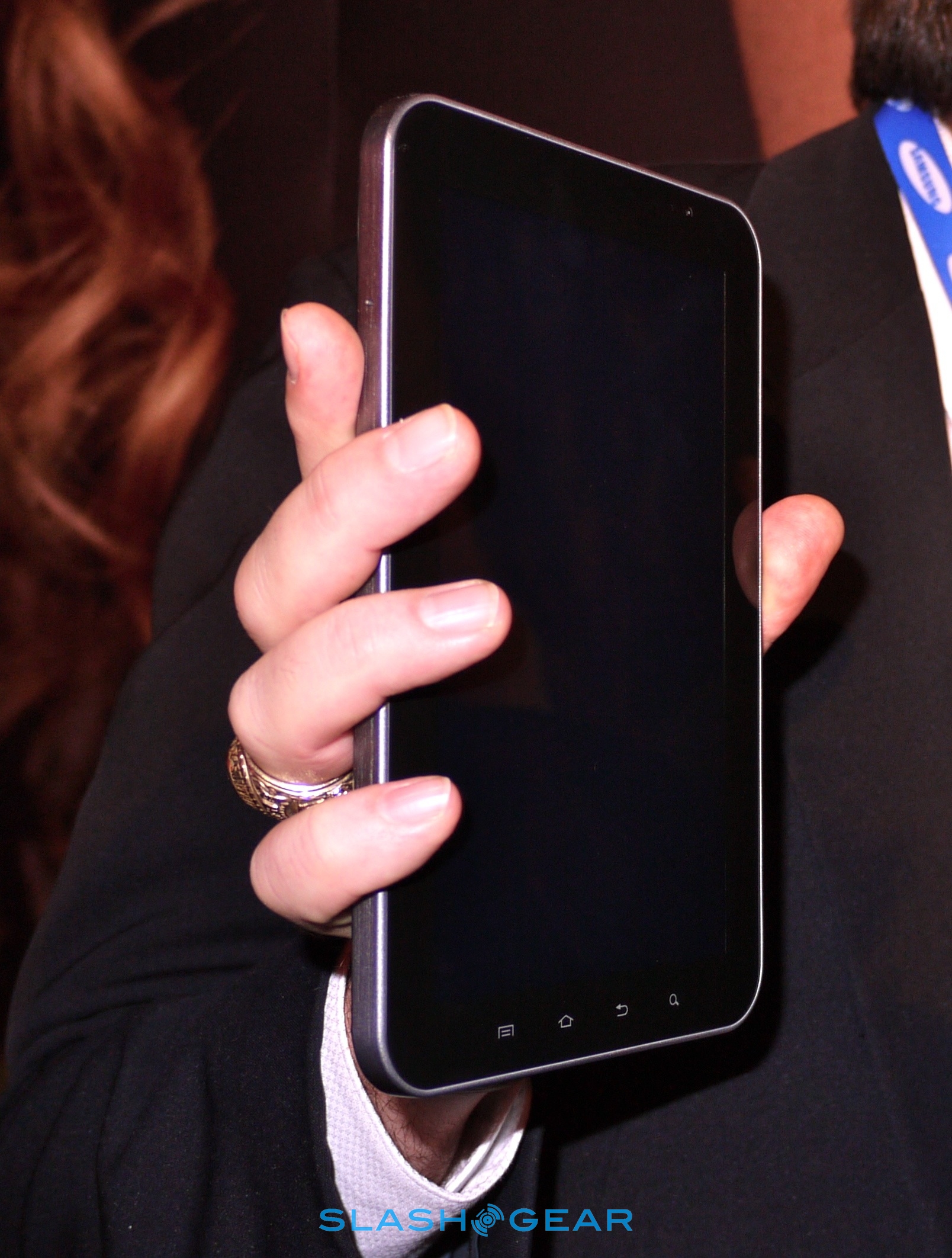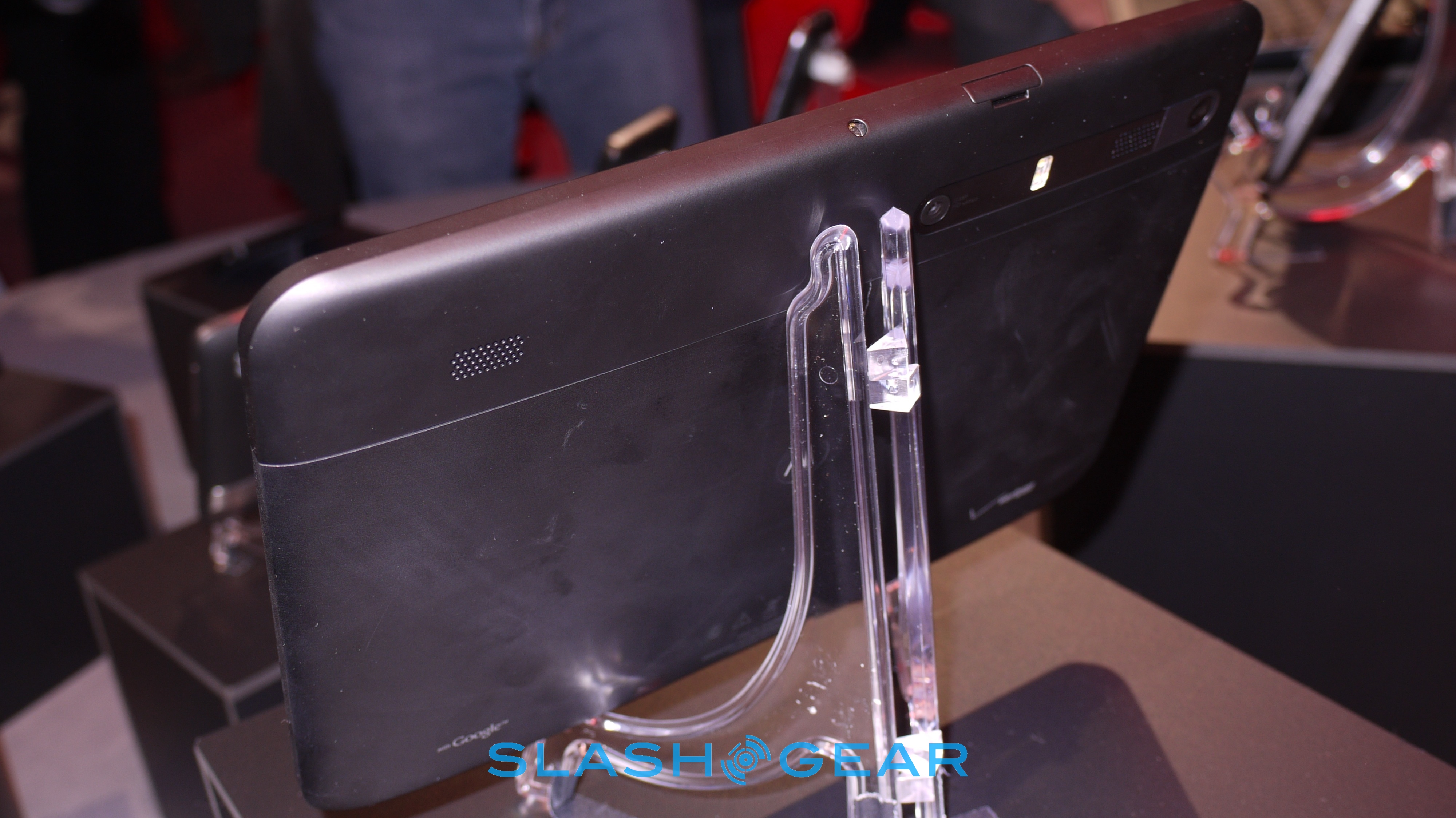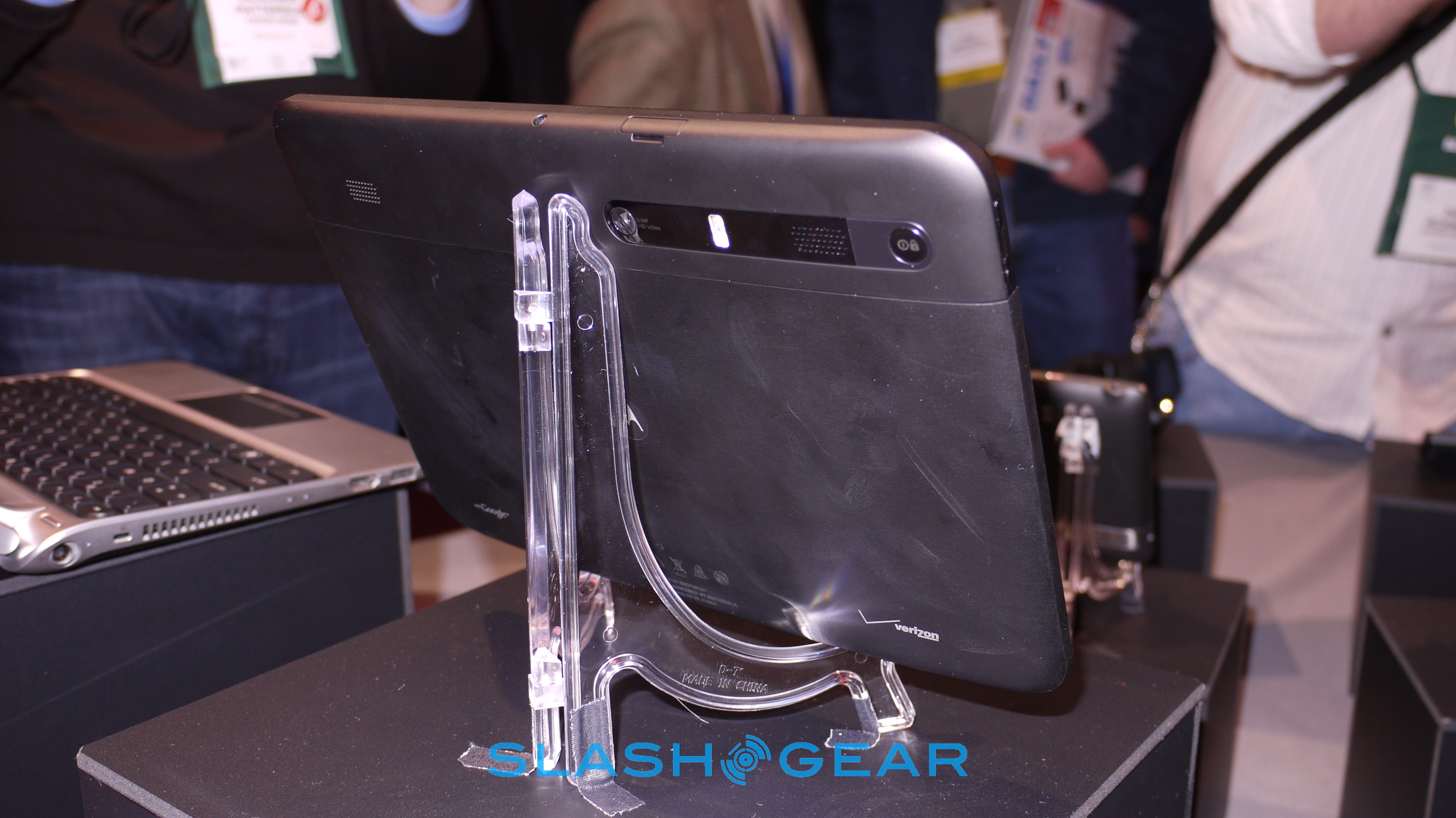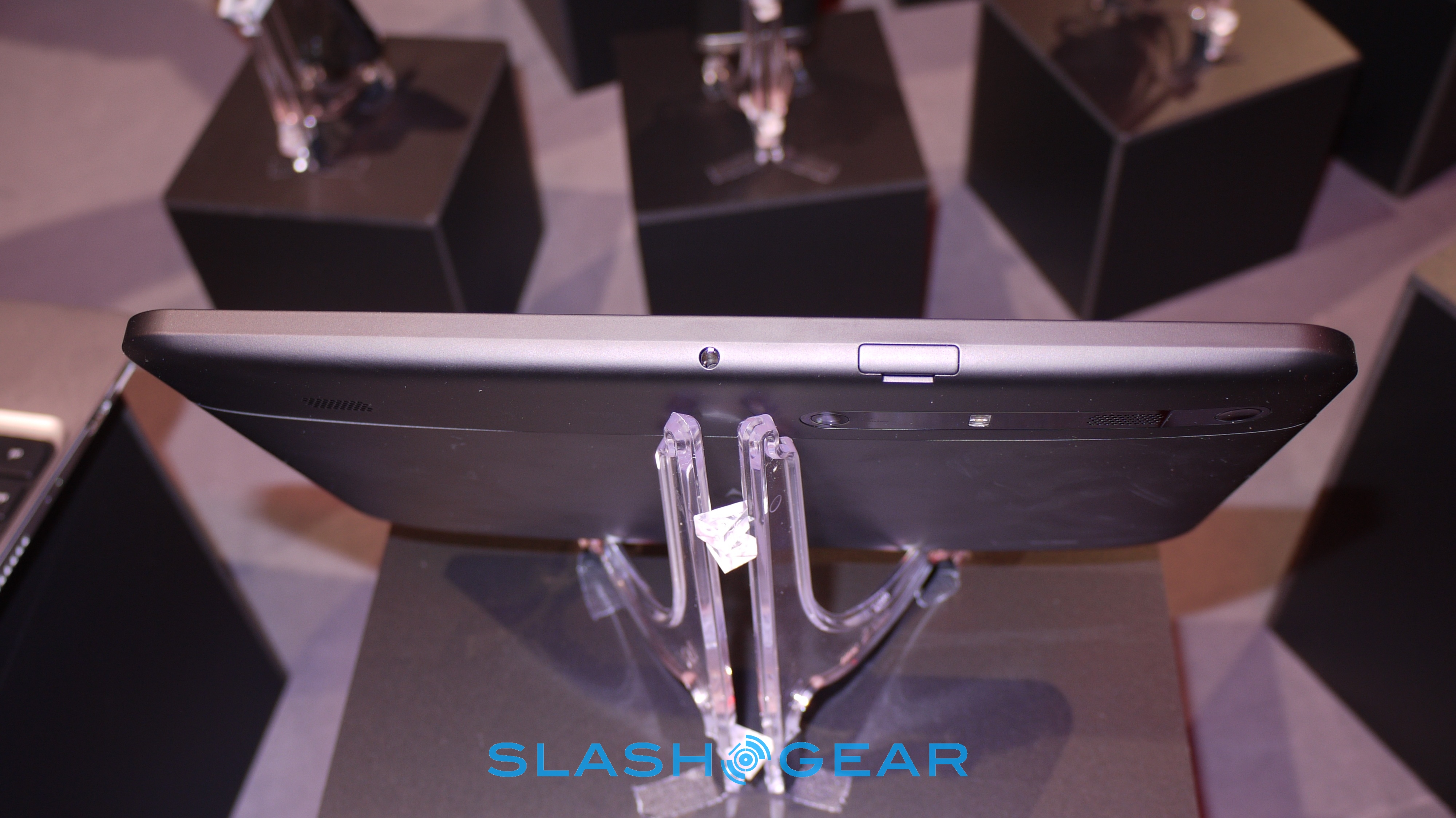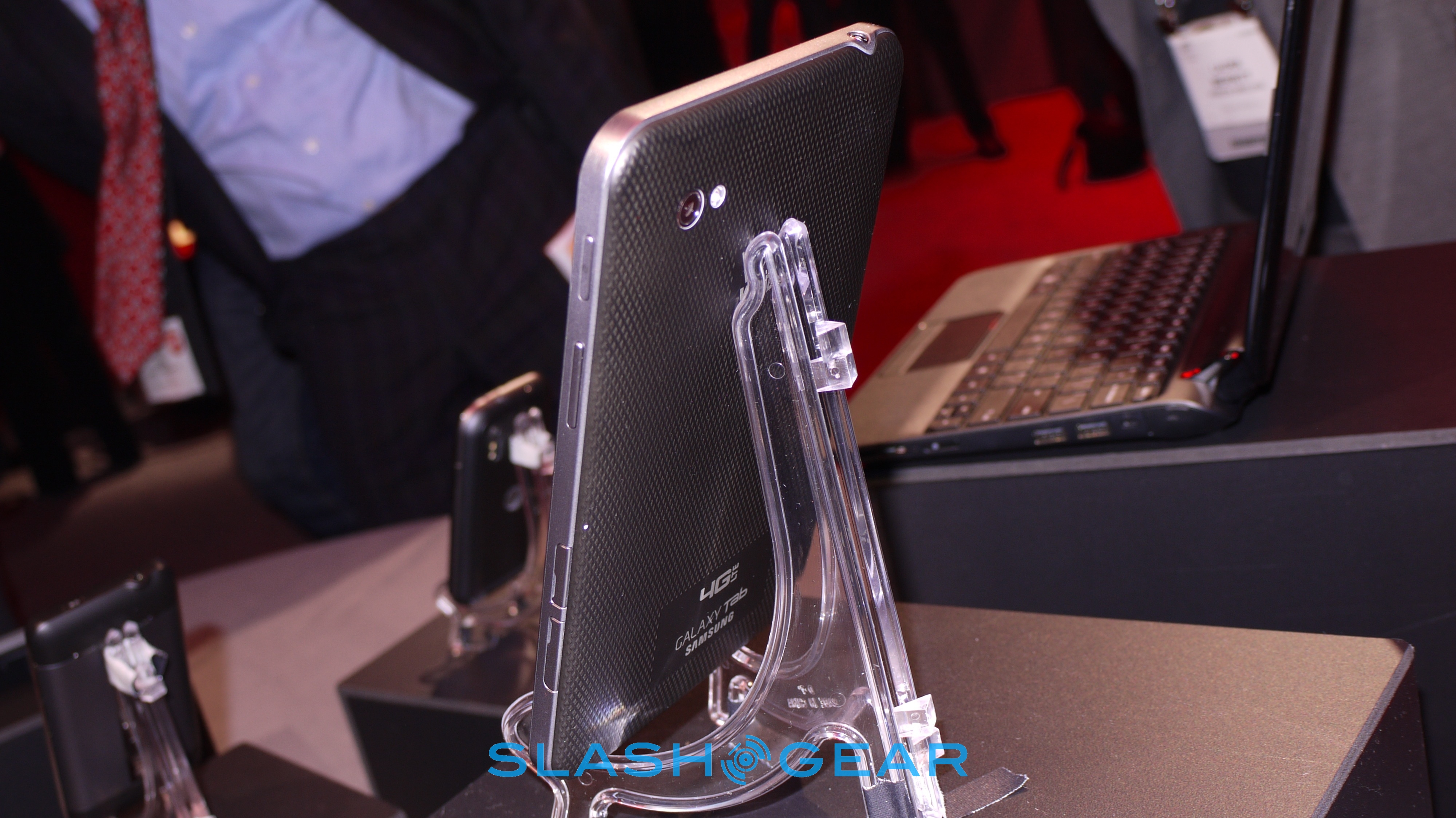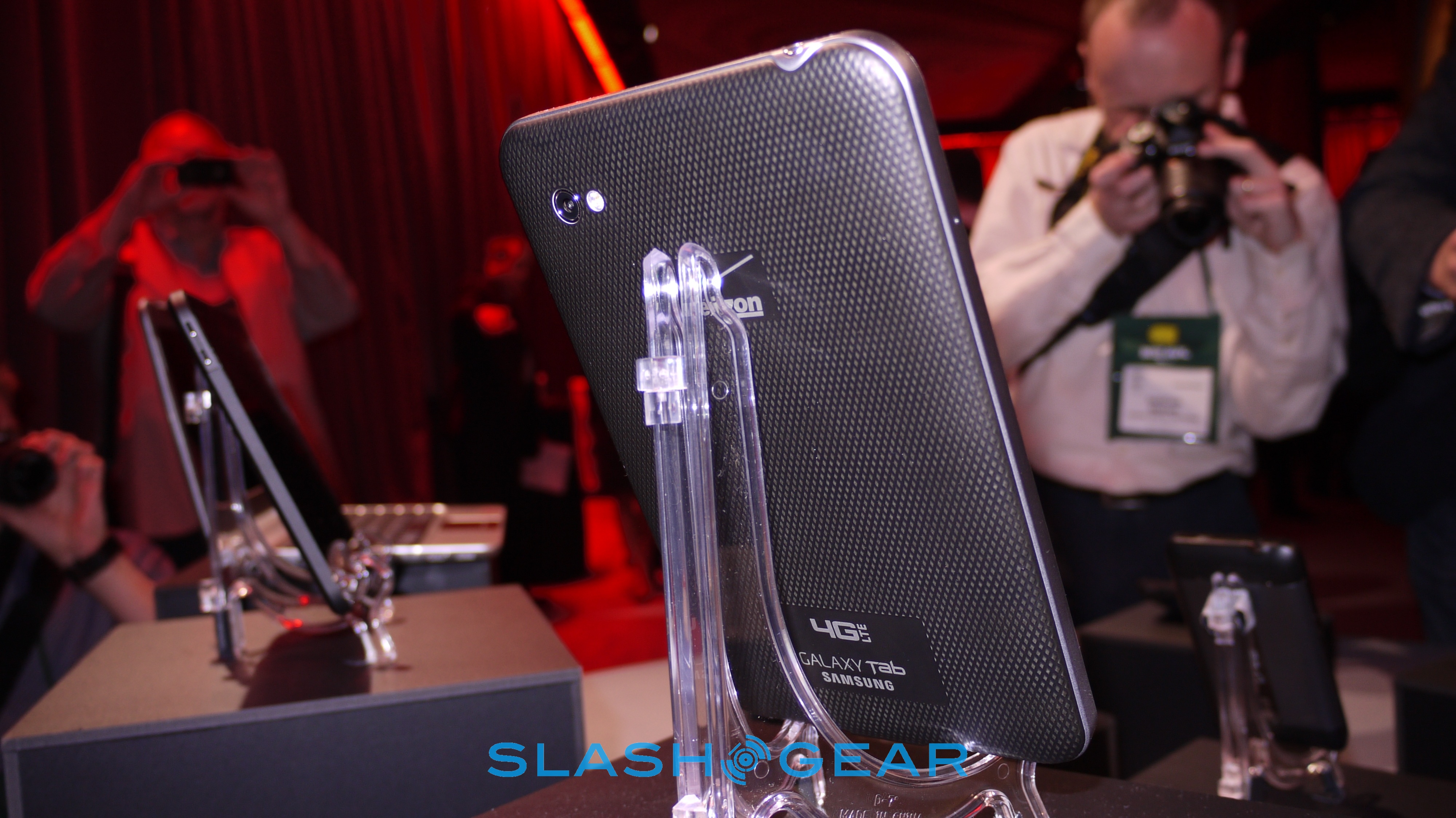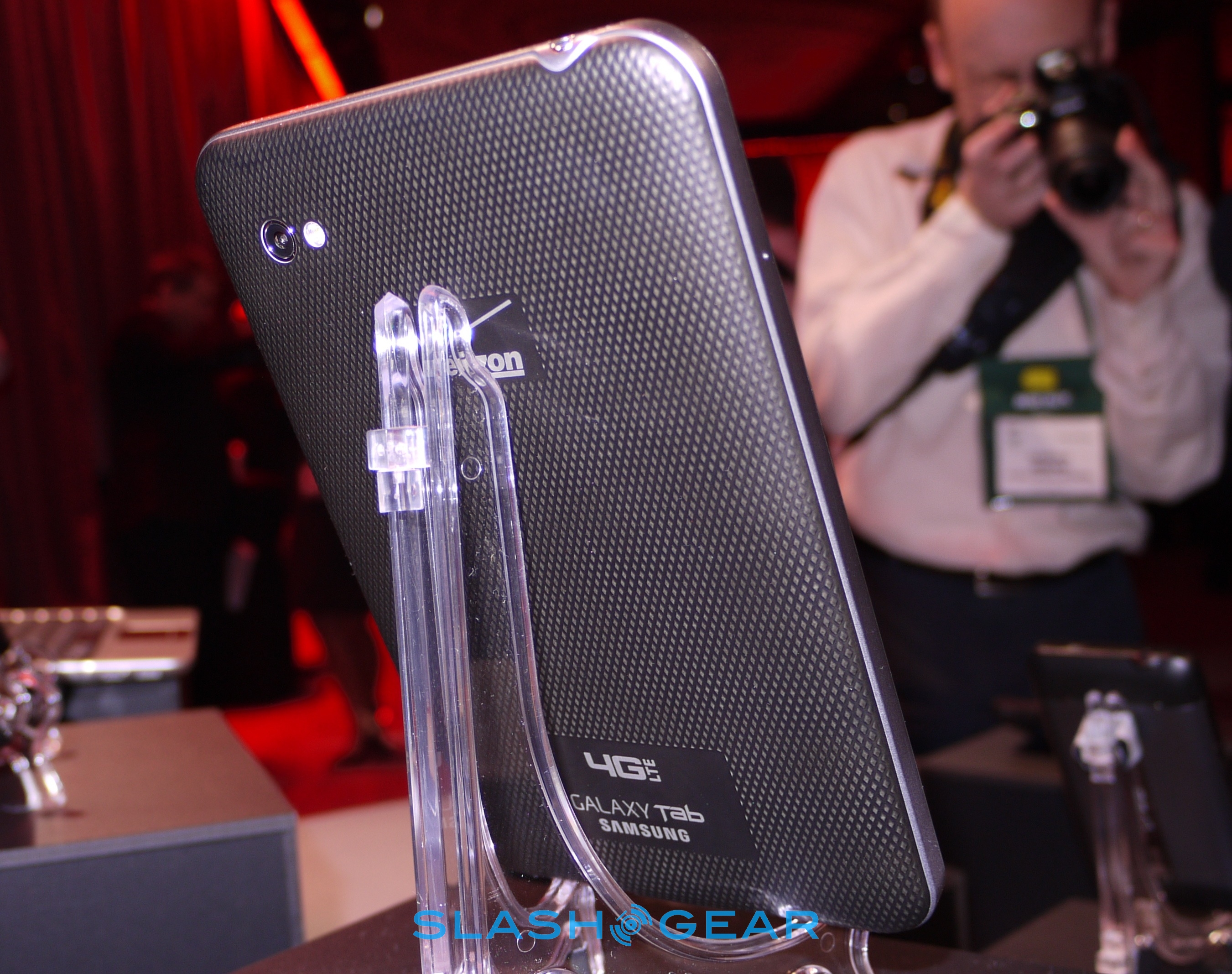Samsung 4G-Enabled Galaxy Tab, Smartphone & Mobile Hotspot Announced At CES 2011
While HTC may have been first to pull the trigger on the Verizon stage at the Consumer Electronics Show, showing off the often-rumored about HTC ThunderBolt and making it official, Samsung is ready to announce three new 4G-enabled devices. They aren't focusing on one market, though. They've just announced that they've got a smarphone, a tablet, and a mobile hotspot with the Samsung name coming to Verizon soon.
The 4G-enabled smartphone, which is currently running around without a name (according to the press release, anyway), will be running Android 2.2. Other features of the device will focus on the high-end, with the device boasting a 4.3-inch Super AMOLED Plus display, a 1GHz processor under the hood, an 8MP camera on the back, and a 1.3MP camera on the front for video chats.
The tablet is, not surprisingly, a Galaxy Tab, which is already available on the Verizon network. This one, though, will feature 4G LTE technology on board. It will launch with Android 2.2, and feature a 1.2GHz Hummingbird processor under the hood. There will be a 5MP camera on the back, and a 1.3MP camera on the front. As for the mobile hotspot, it will allow users to connect up to five devices, and access LTE 4G. Full press release is below.
Press Release
LAS VEGAS, NV and BASKING RIDGE, NJ — The operator of the fastest, most advanced 4G network in the United States unveiled a suite of 10 consumer-oriented devices that will run on its 4G LTE network by the middle of this year.
At a news conference at the 2011 Consumer Electronics Show (CES) today, Verizon Wireless announced a suite of 10 forthcoming 4G LTE devices – including smartphones from HTC, LG, Motorola and Samsung; tablets from Motorola and Samsung; a MiFi from Novatel Wireless and a mobile hotspot from Samsung; and two notebooks from HP – which will transform the wireless experience and offer consumers new ways to connect and share their lives at blazingly fast speeds. Verizon expects these consumer-oriented devices to be available by mid-2011, with some available as early as March 2011.
The company also announced it is expanding its 4G LTE network to an additional 140 markets by the end of this year.
Dan Mead, president and chief executive officer of Verizon Wireless, said, "Today, we're unveiling the next evolution of 4G LTE for consumers. During this three-year journey, from acquiring spectrum to launch, we not only transformed our network, but also our business by engaging in a strategy of collaboration and openness, while driving partnerships that will make 4G LTE successful across the globe. The result is true magic – the sum of a powerful network, applications, software systems and devices that bring 4G LTE to life."
Marni Walden, vice president and chief marketing officer of Verizon Wireless, said, "For consumers, our 4G LTE network isn't about simply doing things faster. It's about doing things we couldn't do before. In the consumer electronics arena, it's not just about devices. It's about those powerful devices with deeply integrated applications and how our 4G LTE network truly transforms the wireless experience with rich multimedia and real-time response intervals."
4G LTE devices available from Verizon Wireless by the middle of 2011 include:
Smartphones
HTC ThunderBolt (exclusive to Verizon Wireless) – HTC Sense 2.0, Skype mobile™ with video, 1GHz Snapdragon processor, 4.3" WVGA display, Dolby surround sound, 8-megapixel camera and HD video recording, wireless DLNA capability.
LG Revolution – HD support for streaming, playing and recording video, large 4.3-inch touch screen, Android™ 2.2, video telephony support with front-facing camera and mobile hotspot capability to share a 4G connection with up to eight Wi-Fi-enabled devices.
DROID Bionic 4G – Android with Adobe® Flash® and HTML5, front-facing VGA camera and See What I See video feature, rear-facing 8-megapixel camera, 4.3-inch HD quality screen, HDMI connectivity, dual-core 1GHz processor, 512 DDR2 RAM.
Samsung 4G LTE Smartphone – Android 2.2, Google Mobile services, including Google Search™, Google Maps™ and Gmail™, YouTube™, brilliant 4.3-inch Super AMOLED Plus touch screen display, powerful 1GHz application processor, HTML5 Web browser, rear-facing 8-megapixel camera with LED flash and front-facing 1.3-megapixel camera to support video chat capabilities, Samsung Social Hub and Media Hub.
Tablets
Motorola XOOM – 10.1-inch HD 4G LTE upgradable tablet, Android™ Honeycomb, 1080p HD video, Adobe® Flash® Player, front-facing 2-megapixel camera for video chats and 5-megapixel camera to capture video in 720P HD. Mobile hotspot capability provides connection for up to five Wi-Fi-enabled devices.
4G LTE-enabled Samsung Galaxy Tab™ – 7-inch enhanced TFT display with 1024 x 600 WSVGA resolution, Android 2.2, Adobe® Flash® 10.1, 1.2GHz Cortex A8 Hummingbird application processor, rear-facing 5-megapixel camera and front-facing 1.3-megapixel camera and camcorder enable video chat capabilities.
MiFi and Mobile Hotspot
Novatel MiFi® 4510L Intelligent Mobile Hotspot – Small enough to fit in the palm of the hand, share Verizon Wireless' 4G LTE and 3G networks with up to five Wi-Fi-enabled devices.
Samsung 4G LTE Mobile Hotspot – Dual-mode device works as a wireless access point to connect up to five Wi-Fi-enabled devices to Verizon Wireless' 4G LTE or 3G networks.
Notebooks
Compaq CQ10-688nr – 10.1-inch diagonal anti-glare widescreen LED display, Intel® Atom N455 processor, up to 8.5 hours of battery life, multi-format digital media card reader, webcam and multiple connectivity options.
HP Pavilion dm1-3010nr – 11.6-inches, HP CoolSense Technology, HD 1080p, VISION Technology from AMD, up to 10.75 hours of battery life, 320 GB of storage, full-size, island-style keyboard, multi-format digital media card reader, HDMI port, Dolby Advanced Audio and GPS for mapping and navigation.
Verizon Wireless also introduced new applications that are being fully integrated into the new smartphones and run seamlessly over the 4G LTE network. An upgraded version of Skype mobile takes advantage of video capabilities enabled by 4G LTE's incredible speed, allowing users to see and hear friends and family when making or receiving Skype-to-Skype video calls. EA's ROCK BAND leverages the high-speed, low-latency 4G LTE network to provide the next generation of multiplayer gaming. At launch, this will be the first time the game can be played with friends over the mobile network, which means consumers can rock out with their friends like never before with 20 favorite hits – while on the go.
Since its launch 32 days ago, Verizon Wireless' 4G LTE network has provided laptop users with speeds up to 10 times faster than the company's 3G network. In real-world, fully-loaded network environments, laptop users experience average data rates of 5 to 12 megabits per second (Mbps) on the downlink and 2 to 5 Mbps on the uplink.
Tony Melone, executive vice president and chief technology officer of Verizon, said, "We will aggressively continue launching 4G LTE markets over the next 36 months. We'll cover two-thirds of the U.S. population in the next 18 months, and by the end of 2013 we'll offer our 4G LTE network from coast to coast – everywhere that we offer 3G today. In order to get there, we'll add more than 140 markets in 2011, including Detroit, Raleigh-Durham, Memphis, Milwaukee, Honolulu, Boise, Mobile, Little Rock, Sioux Falls and Salt Lake City."
(EDITORS NOTE: A list of initial 4G LTE markets to be launched in 2011 is located at the end of the news release.)
Verizon Wireless' primary 4G LTE network vendors, Ericsson and Alcatel-Lucent, are providing the underlying infrastructure for the 4G LTE network. Verizon Wireless' 700 MHz spectrum gives the company specific advantages with 4G, including improved in-building penetration and a contiguous, nationwide network footprint.
Verizon Wireless is also working with rural companies to collaboratively build and operate a 4G network in those areas using the tower and backhaul assets of the rural company and Verizon Wireless' core 4G LTE equipment and premium 700MHz spectrum. Rural operators are leveraging Verizon Wireless' scale for infrastructure while they keep their customers on the cutting edge of technology. Bluegrass Cellular is the first rural wireless provider to partner with Verizon Wireless, and to date, more than 200 organizations have expressed interest in collaborating with Verizon Wireless to bring 4G LTE to rural America.
Since 2007, when Verizon Wireless jump-started the global 4G LTE ecosystem with its selection of LTE for its 4G technology, the company has developed deep partnerships to spearhead a broad LTE ecosystem, including the LTE Innovation Center in Waltham, Mass., and an LTE Applications Center, soon to open in the San Francisco area.
Melone concluded, "2011 will be a gang buster year, especially as we combine our growing 4G LTE network with our amazing lineup of 4G devices and applications that take advantage of high speed and low latency."
Verizon Wireless' 4G LTE network already reaches more than one-third of all Americans. A list of initial 4G LTE markets to be covered by Verizon Wireless' 4G LTE network in 2011 include:
Huntsville, Alabama
Mobile, Alabama
Montgomery, Alabama
Little Rock, Arkansas
Colorado Springs, Colorado
Gainesville, Florida
Lakeland-Winter Haven, Florida
Pensacola, Florida
Sarasota-Bradenton, Florida
Tallahassee, Florida
Augusta, Georgia
Honolulu, Hawaii
Kahului-Wailuku, Hawaii
Lahaina, Hawaii
Boise-Nampa, Idaho
Carbondale-Marion, Illinois
Wichita, Kansas
Baton Rouge, Louisiana
Hammond, Louisiana
Detroit, Michigan
Flint, Michigan
Fayetteville-Lumberton, North Carolina
Greensboro-Winston-Salem-High Point, North Carolina
Raleigh-Durham, North Carolina
Wilmington, North Carolina
Dayton-Springfield, Ohio
Tulsa, Oklahoma
Erie, Pennsylvania
State College, Pennsylvania
Charleston, South Carolina
Columbia, South Carolina
Greenville-Spartanburg, South Carolina
Hilton Head, South Carolina
Sioux Falls, South Dakota
Chattanooga, Tennessee
Clarksville, Tennessee
Cleveland, Tennessee
Kingsport, Tennessee; Johnson City, Tennessee; Bristol, Virginia/Tennessee
Knoxville, Tennessee
Memphis, Tennessee
Beaumont-Port Arthur, Texas
Bryan-College Station, Texas
Provo-Orem, Utah
Salt Lake City-Ogden, Utah
Centralia, Washington
Olympia, Washington
Charleston, West Virginia
Madison, Wisconsin
Milwaukee, Wisconsin
For more information about Verizon Wireless' 4G LTE network, visit www.verizonwireless.com/lte. To see a replay of the Verizon 4G LTE News Conference webcast from CES 2011, visit http://www.verizonwebcasts.com/ces/2011/news.
(EDITOR'S NOTE: Media can access high-resolution images and video of the 4G LTE devices and other multimedia assets related to Verizon Wireless' 4G LTE network in the Verizon Wireless Multimedia Library at www.verizonwireless.com/multimedia.)
About Verizon Wireless
Verizon Wireless operates the nation's fastest and most advanced 4G network and largest and most reliable 3G network, and serves more than 93 million customers. Headquartered in Basking Ridge, N.J., with 80,000 employees nationwide, Verizon Wireless is a joint venture of Verizon Communications (NYSE, NASDAQ: VZ) and Vodafone (LSE, NASDAQ: VOD). For more information, visit www.verizonwireless.com. To preview and request broadcast-quality video footage and high-resolution stills of Verizon Wireless operations, log on to the Verizon Wireless Multimedia Library at www.verizonwireless.com/multimedia.
NOTE: This press release contains statements about expected future events and financial results that are forward-looking and subject to risks and uncertainties. For those statements, which may include or be preceded by such words as "expects," "anticipates," "intends," "plans," "believes," "seeks," "estimates" and similar expressions, we claim the protection of the safe harbor for forward-looking statements contained in the Private Securities Litigation Reform Act of 1995. These forward-looking statements speak only as of the date of this presentation and we undertake no obligation to publicly update or revise them for any reason.
The following important factors, in addition to those discussed under "Risk Factors" in our Annual Report on Form 10-K (No. 333-160446), could affect future results and could cause those results to differ materially from those expressed in the forward-looking statements: changes in economic conditions; our ability to complete transactions relating to acquisitions and dispositions, including the integration of the Alltel business; changes in the ratings of our debt securities or those of Verizon Communications; adverse conditions in the credit markets impacting cost or availability of financing sufficient to meet our capital requirements; our ability to acquire and retain customers; our continued provision of satisfactory service to our customers at an acceptable price; the effects of competition; our ability to adapt to changing conditions in the wireless industry; the ability of our key suppliers to meet their obligations to us; the effects of material changes in available technology, including technology substitution and the cost of deployment; the impact of continued unionization efforts with respect to our employees; adverse regulatory and taxation developments; the effects of litigation; the impact of equipment failures, natural disasters, terrorist acts or other breaches of network or information technology security; and the effects of any required future changes in accounting assumptions.

